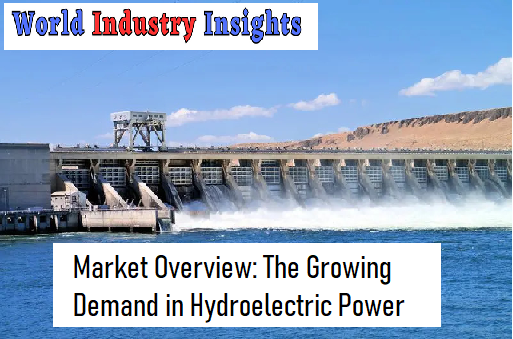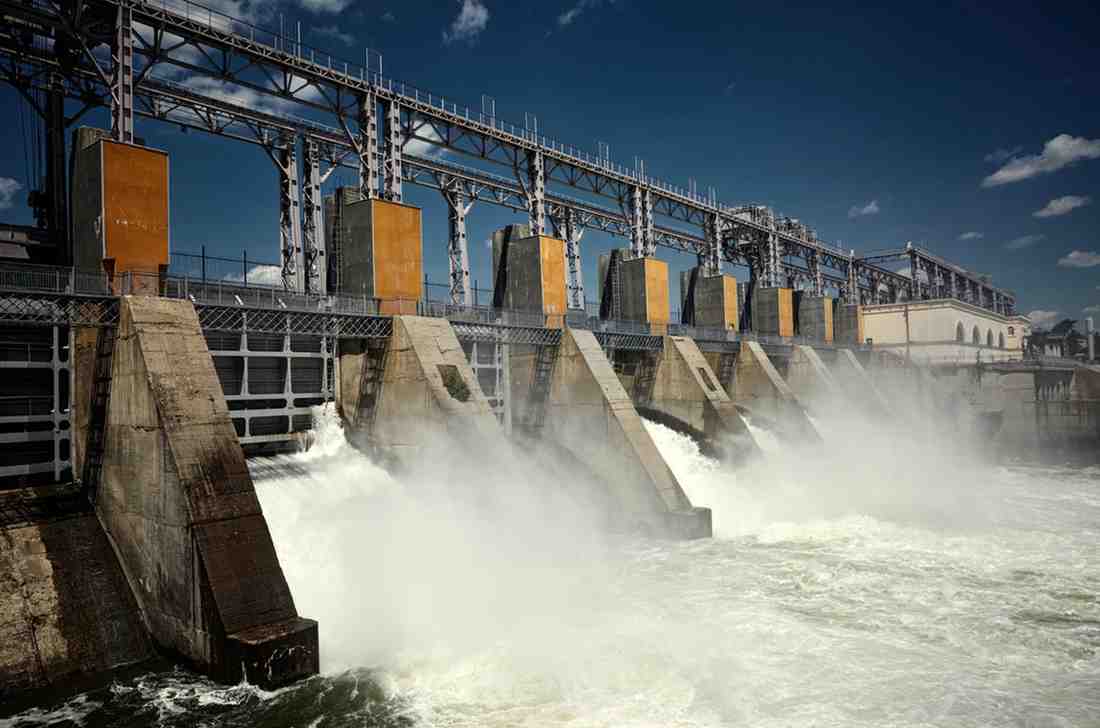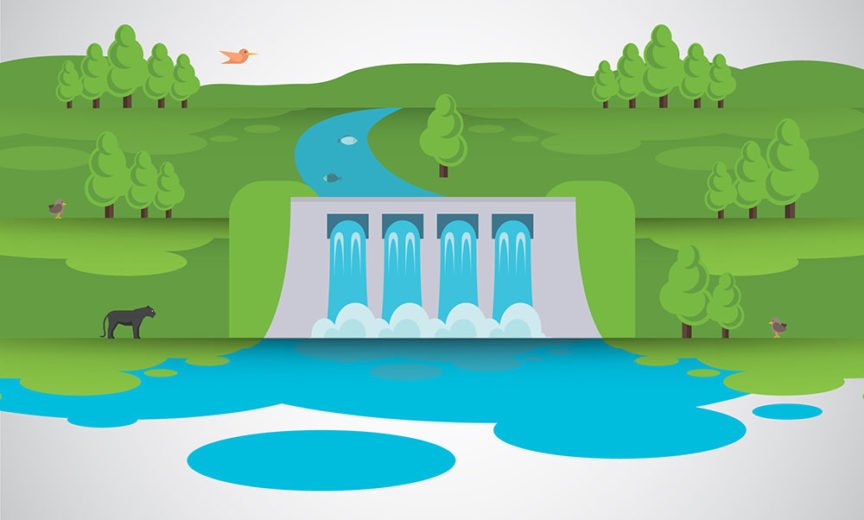Growing Demand in Hydroelectric Power: Few conversations dominate the global sphere as the urgent and encompassing discourse on energythe means to its generation, consumption, and sustainability. As the contours of this dialogue expand, it becomes incumbent upon us to analyze and evaluate the protagonists in this space.
This article serves to unveil and elucidate the story of one such herohydroelectric power. Unraveling the threads of its history, journey, impact, and future prospects, it aims to shed light on the integral role this renewable energy source plays in our present and future.
Hydroelectric power has harnessed the vitality of water to convert it into electricity since time immemorial, contributing significantly to the world’s energy portfolio. Its reputation as a sustainable, low-cost, and reliable power source is well-known, but what does the future hold for it?
Understanding Hydroelectric Power
By essence, hydroelectric power is generated by leveraging the kinetic energy of flowing or falling water, transforming it into electrical energy. The basic principle it operates on is simpleuse water to spin turbines, which in turn activates generators to produce electricity.
The genesis of hydroelectric power dates back to ancient Greece, where water wheels were employed for grinding wheat into flour. However, it was not until the late 19th century that hydroelectricity was used for power generation, marking the inception of large-scale hydroelectric power plants.
In essence, a hydroelectric power plant operates via a reservoir where water is stored. When electricity is needed, the water is released, flows through a turbine, spins it, which then turns a metal shaft in an electric generator, and voilaelectricity!
Read Also: Guidelines for Hydroelectric Power| Regulatory Standards Safety and Implementation
Advantages of Hydroelectric Power
Standing tall as one of the primary sources of renewable energy, hydroelectric power is inherently replenishable and does not emit harmful greenhouse gases, making it a clean and green power source.
Once the initial costs are covered, hydroelectric power plants usually have low operating expenses and an impressive lifespanoften exceeding a century.
Hydroelectric power, owing to its on-demand power generation capability, contributes to grid stability. Its independence from fossil fuels allows for greater energy security.
Global Energy Landscape
Today’s world witnesses a mixed tapestry of energy consumption. While fossil fuels still make up a significant part of the global energy mix, renewables are gradually carving out their niche.
With the burgeoning global population and rapid urbanization, the demand for electricity has catapulted.
Hydroelectric power, with its litany of benefits, has a central role to play in satiating this growing demand while maintaining environmental balance.
Read Also: The Future of Hydroelectric Power Predicted Market Trends
Market Analysis: Hydroelectric Power Generation
As per recent data, hydroelectric power generation accounts for about 16% of the global electricity productiontestament to its significant capacity.
While the lion’s share of hydroelectric power capacity lies in Asia, Europe and North America also boast substantial contributions. Major players include China, Brazil, and the United States.
Increasing awareness about climate change and energy security are significant growth drivers for hydroelectric power.
Environmental Considerations
Albeit a green energy source, hydroelectric power does carry potential risks to ecosystems and biodiversity, primarily due to dam construction.
Mitigation measures such as fish ladders and sediment flushing, coupled with sustainability initiatives like certified renewable energy, help alleviate these impacts.
When juxtaposed with other energy sources, hydroelectric power, despite its environmental footprint, still presents a lesser evil than fossil fuels.
Read Also: Global Hydroelectric Power Trends A Cross-Cultural Perspective on Hydroelectric Power
Market Opportunities and Potential
A vast quantum of global hydroelectric power potential remains untapped, offering immense market opportunities.
Emerging economies, with their surging power demands and unexploited water resources, provide fertile ground for hydroelectric power expansion.
The advent of advanced technologies and innovations like small hydro systems, floating solar panels on hydro reservoirs, and more, continue to unlock new avenues.
Government Policies and Incentives
Governments worldwide are implementing regulatory frameworks to encourage the adoption of hydroelectric power, such as the Renewable Portfolio Standard in the U.S.
Financial incentives and subsidies, such as feed-in tariffs and tax credits, make hydroelectric power projects economically viable.
Successful policy examples include Brazil’s Proinfa Program and China’s renewable energy law, which have bolstered their respective hydroelectric power sectors.
Read Also: Innovations in Hydroelectric Power A Look at Recent Trends and Developments
Challenges and Limitations
Despite its numerous benefits, hydroelectric power is not devoid of challenges. High upfront costs and complex project financing often pose obstacles.
The social and cultural implications of dam construction, including displacement of communities, can spur opposition.
While mitigation measures exist, environmental concerns persist, especially pertaining to aquatic ecosystems.
Market Outlook and Future Prospects
Analysts predict a steady growth trajectory for hydroelectric power capacity, fueled by technological advancements and rising environmental consciousness.
With a burgeoning focus on integrated renewable energy systems, hydroelectric power can serve as a stabilizing force in these setups.
The integration of emerging technologies, like artificial intelligence for optimized performance, is poised to revolutionize hydroelectric power.
Case Studies: Successful Hydroelectric Power Projects
The Three Gorges Dam in China, the world’s largest hydroelectric power station, generates an enormous amount of renewable energy.
The Itaipu Dam, straddling Brazil and Paraguay, has made significant contributions to these countries’ energy matrices.
The Grand Coulee Dam in the United States showcases how hydroelectric power can reshape an entire region’s energy landscape.
Read Also: Technological Advancements in Hydroelectric Power Systems
Investment and Business Opportunities
The hydroelectric power sector brims with possibilities for project development and investment, particularly in untapped markets.
Opportunities for international collaborations and partnerships abound, promising mutual growth and learning.
Market entry strategies hinge on understanding regional energy policies, potential project sites, and local community needs.
Innovations and Advancements
Innovations like small-scale and micro hydroelectric power systems are democratizing access to hydroelectric power.
Pumped storage solutions offer enhanced grid reliability and energy storage capacity, further bolstering hydroelectric power’s value proposition.
Harnessing ocean and tidal energy opens new frontiers in hydroelectric power generation, multiplying its potential manifold.
Community Engagement and Social Impact
Hydroelectric power projects often lead to local employment generation and economic growth, benefiting local communities.
Encouraging stakeholder involvement and public participation in project planning and implementation fosters community buy-in and success.
Successful community initiatives, such as Nepal’s community-based micro-hydro projects, demonstrate the potential of local engagement.
Read Also: Comparative Study Efficiency of Different Hydroelectric Power Technologies
Conclusion of Growing Demand in Hydroelectric Power
As we traverse the landscape of hydroelectric power, its merits, challenges, and vast potential unfold before us. This renewable energy source has firmly anchored itself in our present and is poised to play a crucial role in our future.
With technological advancements, increasing market opportunities, and supportive policy frameworks, the prospects for hydroelectric power shine bright.
As our quest for a sustainable future intensifies, hydroelectric power stands as a beaconoffering a path forward imbued with promise, potential, and prosperity.
FAQs Related to The Growing Demand in Hydroelectric Power
Q1. What is hydroelectric power and how does it work?
Hydroelectric power is a form of renewable energy that converts the kinetic energy of flowing or falling water into electricity, typically using a dam, turbine, and generator system.
Q2. What are the advantages of hydroelectric power?
Hydroelectric power is a renewable, clean, and low-operating-cost energy source that contributes to grid stability and energy independence.
Q3. What are some of the environmental impacts of hydroelectric power?
While hydroelectric power is environmentally friendly, it can impact local ecosystems and biodiversity, mainly due to dam construction, but mitigation measures can help minimize these impacts.
Q4. What role does hydroelectric power play in the global energy landscape?
Hydroelectric power contributes to about 16% of global energy production and is poised to play an increasingly important role with the rise in electricity demand and focus on renewable sources.
Q5. What are the future prospects for hydroelectric power?
The future of hydroelectric power is promising with technological advancements, untapped market opportunities, and supportive government policies driving its growth.
Our Reader’s Queries
Is hydroelectric power on demand?
Hydropower is an incredibly responsive energy source for meeting peak demands due to the fact that hydroelectric generators can be started or stopped almost instantly. This sets it apart from other energy sources and makes it a reliable option for times when energy demands are at their highest.
What is the future for hydroelectric power?
Hydropower is the leading source of renewable electricity generation, surpassing all other technologies combined. It is projected to maintain its position as the world’s largest source of renewable electricity generation until the 2030s. Even beyond that, it will remain a crucial player in reducing carbon emissions and enhancing system flexibility.
Who are the top 3 consumers of hydroelectric power?
In 2021, the top five hydro power generation markets were China, Canada, Brazil, the United States of America, and Russia. China took the lead as the leading hydro power generation market. These countries have shown significant growth in their hydro power generation capabilities, making them key players in the global energy market.
Why will hydropower supply less of our total energy demands in the future?
Climate-induced drought is causing hydroelectricity to become an increasingly unreliable source of energy. Dams in the American West have experienced a significant reduction in their electricity generating capacity, exacerbating the issue.



